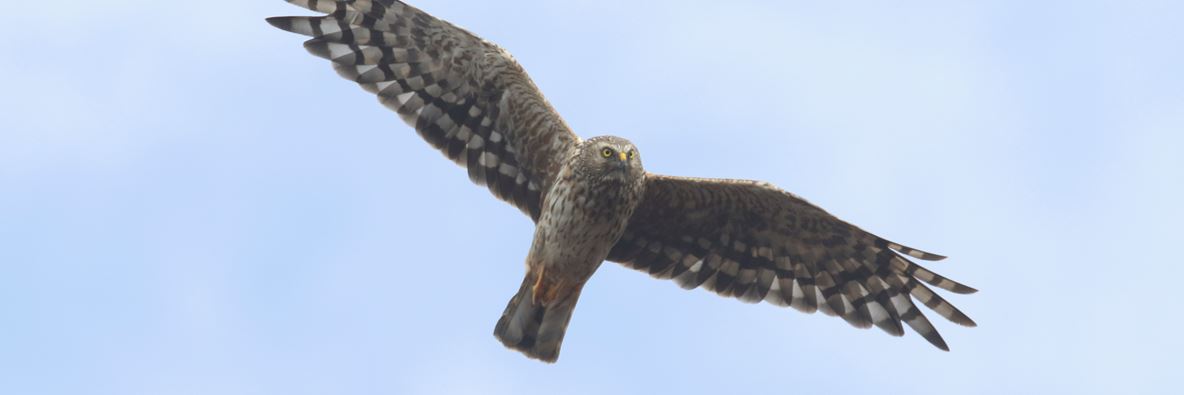Crowd Funded Hen Harriers
Hen Harrier Action and the RSPB partnered up to learn more about one of the UKs rarest birds of prey, The Hen Harrier, with the support of a public crowdfunder appeal.
Hen Harrier Action set up the appeal to raise funds to purchase nest cameras and satellite tags which have been placed on three birds. The tagging was undertaken by the RSPB alongside licensed taggers. The tags will help find out where the birds spend their time and with illegal killing the main reson for their decline, they will identify where this happens too.
One tag was fitted to a male bird named Charlie, who was tagged on the Scottish Borders.
The others were fitted to females named Macha, after the Celtic goddess of war, and Iris, after the Greek goddess of the sky. Macha and Iris were tagged in northern England and northern Scotland respectively.
The hen harrier (Circus cyaneus) is a bird of prey. The term "hen harrier" refers to its former habit of preying on free-ranging fowl.
The hen harrier is 41–52 cm (16–20 in) long with a 97–122 cm (38–48 in) wingspan.
The male is mainly grey above and white below except for the upper breast, which is grey like the upperparts, and the rump, which is white. The wings are grey with black wingtips. The female is brown above with white upper tail coverts, Their underparts are buff streaked with brown. The juveniles, are similar to the females but with less distinct streaks.
The nest is built on the ground or on a mound of dirt or vegetation. Nests are made of sticks and are lined inside with grass and leaves. Four to eight whitish eggs are laid. The eggs are incubated mostly by the female for 31 to 32 days.
Once hatched, the male usually passes food to the female, who feeds the young, although later the female will capture food and simply drop into the nest for her nestlings to eat. The chicks fledge at around 36 days old, though breeding maturity is not reached until 2 years in females and 3 years in males.
The longest-lived known bird is 16 years and 5 months. However, adults rarely live more than 8 years.
Known for their acrobatic courtship displays where male birds perform a series of twists and dives, hen harriers are often nicknamed ‘skydancers’. They are predominantly found in heather covered moorlands where they feed on small birds and mammals such as voles.
Hen harriers are among the UK’s most persecuted birds of prey. They were hunted almost to extinction in the late 19th century before their population recovered after the Second World War due to reduced shooting and the introduction of legal protections. However, they are now severely threatened by illegal killing and their numbers have plummeted in recent decades.
The next UK-wide hen harrier population survey is due to take place in 2023, which will shed further light on the current status of the species. 
Photo credit: RSPB




